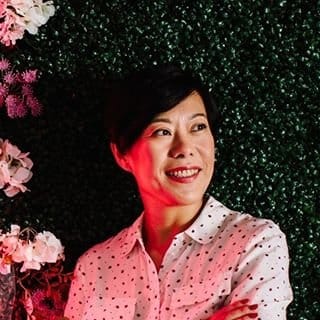Getting High Quality, Sustainability, and Affordability in Bed Together

Those three characteristics rarely apply to one company simultaneously, but Phoebe Yu went ahead and made the impossible possible. Since 2014, Ettitude has been giving sleep-lovers (erm, all of us?) a happy choice between shoddy and scratchy or high-priced billion-thread-count sheets.
Yu built this brand to fill a much-desired gap in the bedding market—high-quality, minimalistic, sustainable bedsheets without the prohibitive price tag. She’s been pushing the boundaries and disrupting a dominated industry for years, and there seems to be no end in sight.
Read on and learn how Yu has tackled the pandemic, her mission through Ettitude, and some tidbits she’s learned along her ecommerce journey.
Q: What’s one thing you know now that you wish you’d known five years ago?
A: I wish I would have gotten into a fight with my co-founder earlier. Of course, I think five years ago, I didn’t have a co-founder and it was just me. I was back in Melbourne, Australia.
I think if you find a co-founder that has complementary skills and also shares the same passion and vision for the brand and the product as you, that’s definitely a big plus. Finding someone to handle a situation on their own so you can divide and conquer is also helpful.
My co-founder is an entrepreneur from the U.S. and I’m from Australia. That helped us to grow quickly in the U.S. market and she has expertise there. Instead of having to learn what the U.S. market looked like, it shortened my time to quickly have an expert on my team instantly.
I still bring in the product expertise and also what I learned in the Australia market, like marketing brand needs, to the company. There still is a lot of similarity there, but the U.S. market is quite a different dynamic and it’s definitely bigger than the situation here. I think that’s super important to try and find that person early on.
Q: What does the future of ecommerce look like in your mind?
A: I think a lot of consumer brands realize it’s super important for brands in ecommerce to consider the environmental social impact.
Ecommerce is an overarching word. There are really two types: One is a platform or marketplace like Amazon and Instacart, and the other type is direct-to-consumer brands. I’m probably more familiar with the direct-to-consumer ecommerce model.
The world has changed so much and new things are always happening. I think people really want transparency and honesty from brands. They also hold brands accountable for a lot of the environment and social responsibilities, which I think is totally great.
Otherwise, capitalism can only go so far and we already see a lot of the byproducts of capitalism, which damage society and damage the environment. There are pros and cons to capitalism itself. I think that holding brands and companies more responsible for those and having a purpose, not just by quick growth, is the future.
Q: What is your best failure?
A: I’m supposed to look after the companies providing supply chain logistics in the quick-growth mode. We go out of stock often, which is a failure that I definitely could make better.
We have had that problem since 2018, and when we started to quickly grow in the U.S., we have constantly been sold out. In 2019, we improved and have gotten a lot better in 2020. Of course, with the COVID-19 pandemic, there has been a sudden change in the supply chain, which has gotten disrupted and the port is super busy.
Our stock shortage has still been a problem for us because we have grown super fast in 2020. Every year, we grow around three times bigger compared with the previous year. That has been a huge pressure on the supply chain, also on the logistics part to have to keep up. We have to be more alert and foresee that a bit earlier and acquire stock a bit more aggressively to acquire enough for holiday seasons.
Who knows, we could have grown more if we had been fully in stock. It could be four times growth instead of three times. Nobody could have seen last year coming, I think it was definitely a surprise to all of us.
Q: How have you pivoted strategy during the pandemic?
A: We started to diversify our supply chain, which I think a lot of other companies are doing now as well. Our main suppliers can still be found in Asia, but we’re looking to move closer to shore. Potentially within the United States or South America because there are definitely benefits of being spread all over. Making a big strategy shift to try to and diversify our supply chain to not just be in one spot is our big plan.
Pandemics could happen again in future, so it’s good to spread things out. If you have a supply chain across the continent in a few different places, it will be much safer for your business. It also helps in the sustainability aspect as well.
At the end of last year, we released our first impact report to really set the benchmark for us where we are in 2020. Of course, every year we will do that again and also have aggressive impact goals. Part of it is how much water the product is saving, how much carbon emissions it has right now, and how we can reduce that even further.
Our product itself is actually quite sustainable. It’s very low in carbon emissions but a lot of the carbon emissions are coming from the whole supply chain and through transportation. Airship is a huge emission, so we try to buy more regionally or locally so we can keep dropping our carbon footprint for the whole product lifestyle.